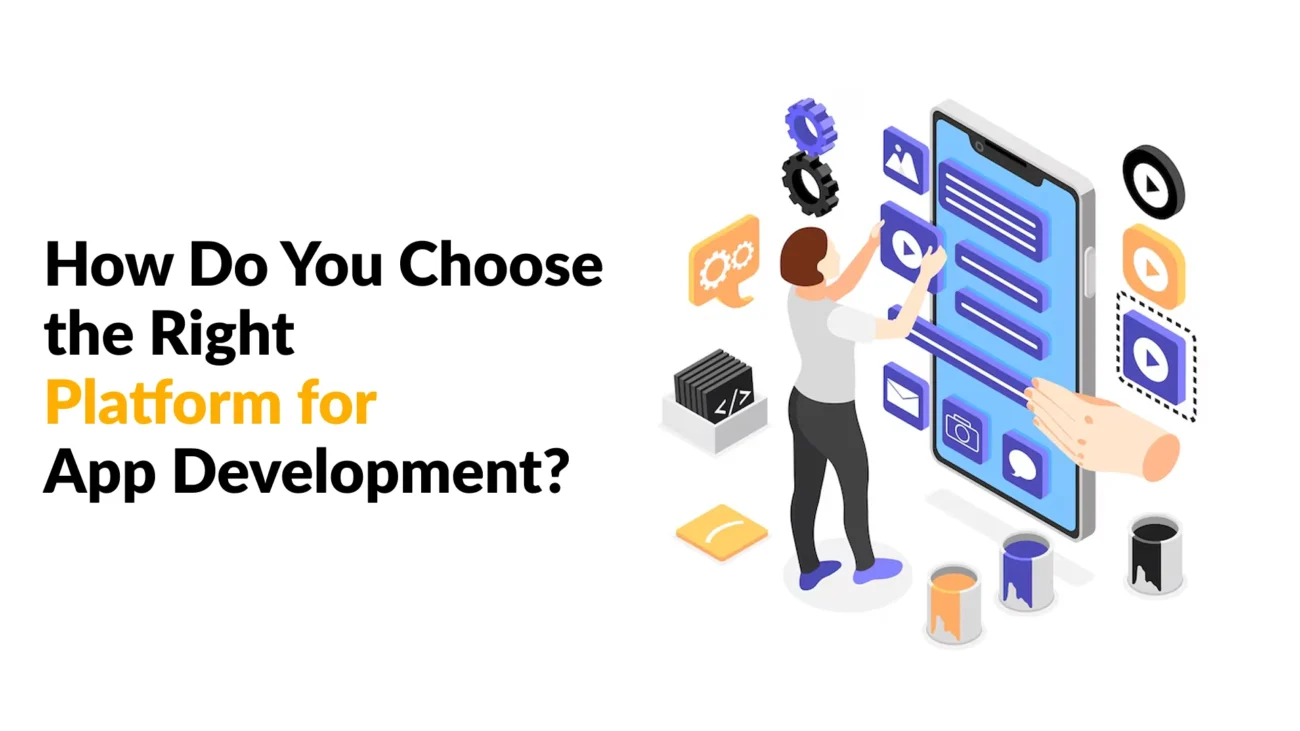In today’s digital landscape, businesses are constantly searching for innovative ways to connect with customers—and mobile apps offer just that. But before you dive into building your next big app, you must ask a crucial question: How do you choose the right platform for app development? The platform you select can make or break your app’s success.
From iOS and Android to cross-platform frameworks, understanding what works best for your goals, budget, and users is vital. In this guide, we’ll help you navigate the process of choosing the right platform for app development.
Why Choosing the Right Platform for App Development Matters
Whether you’re a startup or an enterprise, selecting the right platform for app development directly impacts user experience, performance, development cost, and future scalability. A poor choice could result in wasted time, overspending, or losing potential users.
According to Statista, over 6.8 billion people used smartphones in 2024. That’s why ensuring your app runs smoothly on your users’ preferred devices is non-negotiable.
Step 1: Know Your Audience
The first step in choosing the right platform for app development is understanding your target audience:
- Demographics: Are your users primarily Android or iOS users?
- Location: Android dominates in Asia and Africa, while iOS leads in the US and parts of Europe.
- User Behavior: iOS users often spend more on apps, while Android users may offer a wider reach.
Conduct surveys, use analytics, or study market research to get detailed insights.
Step 2: Define Your App Goals and Features
Clearly define your app’s purpose and the features you need. Ask yourself:
- Will the app require heavy graphics or processing power?
- Do you need access to device hardware like GPS, camera, or Bluetooth?
- Will it support in-app purchases, push notifications, or third-party integrations?
Certain platforms may handle specific features better than others, influencing your decision on the right platform for app development.
Step 3: Evaluate Platform Options
Now let’s explore the key mobile platforms and frameworks available:
1. Native Platforms: iOS and Android
Pros:
- High performance
- Access to native APIs
- Optimised UX
Cons:
- Higher development cost
- Requires separate codebases
Choose native development if you’re targeting a specific audience and need peak performance.
2. Cross-Platform Development (e.g., Flutter, React Native)
Pros:
- Single codebase
- Faster development
- Cost-efficient
Cons:
- Limited access to native features
- Slightly lower performance than native apps
Cross-platform frameworks are ideal if you’re launching an MVP or want to cover both iOS and Android users quickly.
3. Progressive Web Apps (PWA)
Pros:
- No app store approval
- Fast loading
- Accessible on any browser
Cons:
- Limited offline access
- Not suitable for complex apps
Step 4: Consider Budget and Resources
Your budget can greatly influence your decision on the right platform for app development. Native apps may require hiring two development teams, whereas cross-platform tools need just one.
Also, factor in long-term costs like maintenance, updates, and scalability. If you’re on a tight budget, tools like Flutter or React Native offer excellent value without compromising quality.
Step 5: Think About Time to Market
Time is money, especially in fast-paced industries. If speed is crucial, cross-platform development could be your best option. Frameworks like Flutter reduce time to market by allowing you to deploy to both iOS and Android simultaneously.
If you need a feature-rich app with complex integrations, native development might take longer but offers better long-term stability.
Step 6: Assess Security Requirements
Security is a top priority, especially for apps handling sensitive data such as payments or personal information. iOS is often considered more secure due to its closed ecosystem, while Android allows more flexibility but is more susceptible to vulnerabilities.
Whichever you choose, ensure that your platform supports best practices in Modern App Development, including encryption, secure APIs, and regular updates.
Step 7: Look at Long-Term Scalability
Don’t just think about your current needs—consider where your app will be in one to three years. Ask:
- Can the platform handle more users?
- Is it easy to add new features?
- Does it support analytics and performance monitoring?
Platforms that support long-term scalability will save you major redevelopment costs in the future, helping you stay competitive.
Step 8: Explore Community and Support
Strong developer communities and documentation can speed up development and troubleshooting. Popular platforms like React Native and Flutter have extensive communities that offer plugins, libraries, and forums.
Choosing the right platform for app development means having a reliable support system, which ultimately leads to better development efficiency.
Step 9: Check Compliance and App Store Guidelines
Each platform has its own set of rules. Apple’s App Store, for instance, has strict guidelines that could delay your launch if not followed properly. Android is more flexible, but Google Play also has compliance requirements.
Ensure the platform you choose aligns with your app’s purpose, industry standards, and user trust—key aspects of App Development Important principles.
Step 10: Test Before You Commit
If you’re still unsure, try building a prototype or MVP. Use platforms like:
- Expo (React Native)
- Flutter DevTools
- Xcode and Android Studio
Testing helps identify bugs, performance issues, and usability concerns before fully investing in development.
Final Thoughts
Choosing the right platform for app development is not just a technical decision—it’s a strategic one. The platform you choose affects user experience, development costs, and long-term scalability.
To recap:
- Start with audience research
- Clarify your goals and features
- Balance cost with functionality
- Test early, scale smart
The future of mobile apps is dynamic. Following App Development Important principles and choosing the right platform sets you up for long-term growth and user satisfaction.


